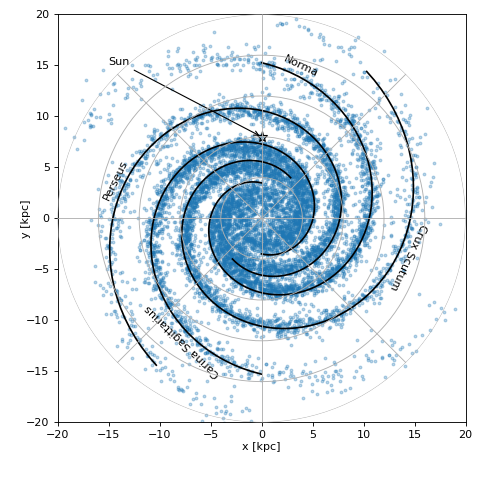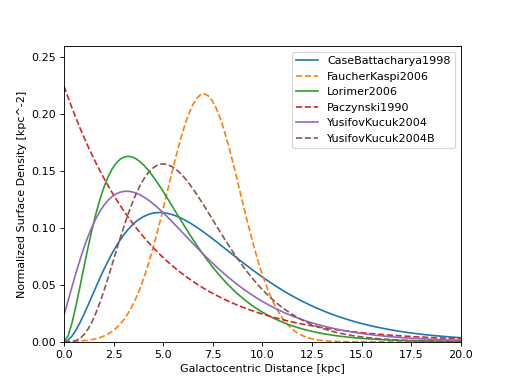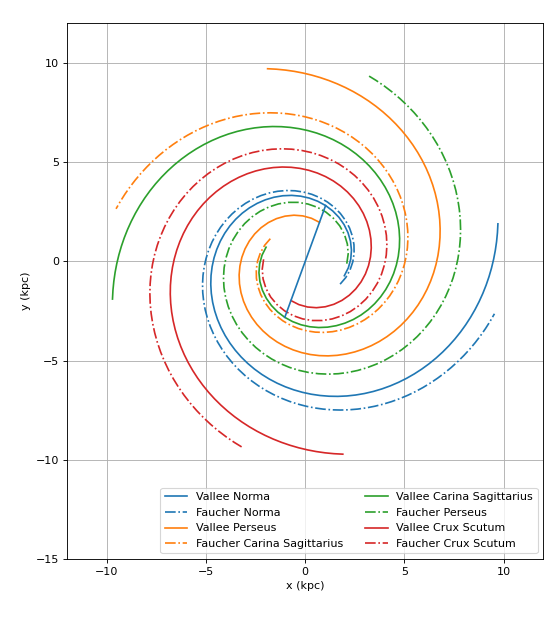Astrophysical source population models#
Introduction#
The gammapy.astro.population module provides a simple framework for population
synthesis of gamma-ray sources, which is useful in the context of surveys and
population studies.
Getting started#
The following example illustrates how to simulate a basic catalog including a spiral arm model.
import astropy.units as u
from gammapy.astro.population import make_base_catalog_galactic
max_age = 1E6 * u.yr
SN_rate = 3. / (100. * u.yr)
n_sources = int(max_age * SN_rate)
table = make_base_catalog_galactic(
n_sources=n_sources,
rad_dis='L06',
vel_dis='F06B',
max_age=max_age,
spiralarms=True,
)
The total number of sources is determined assuming a maximum age and a supernova
rate. The table returned is an instance of Table which
can be used for further processing. The example population with spiral-arms is
illustrated in the following plot.

Galactocentric spatial distributions#
Here is a comparison plot of all available radial distribution functions of the surface density of pulsars and related objects used in literature:

TODO: add illustration of Galactocentric z-distribution model and combined (r, z) distribution for the Besancon model.
Spiral arm models#
Two spiral arm models of the Milky way are available:
ValleeSpiral and
gammapy.astro.population.FaucherSpiral

Velocity distributions#
Here is a comparison plot of all available velocity distribution functions:
